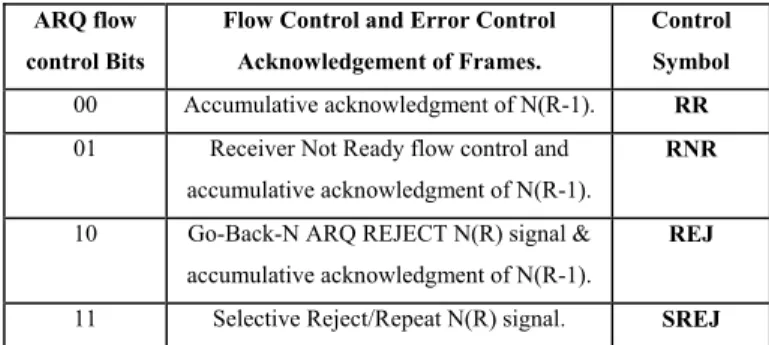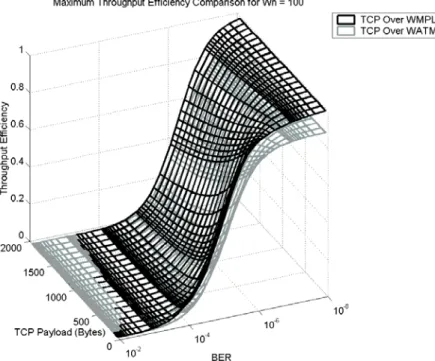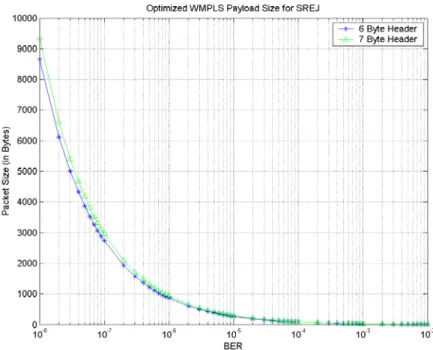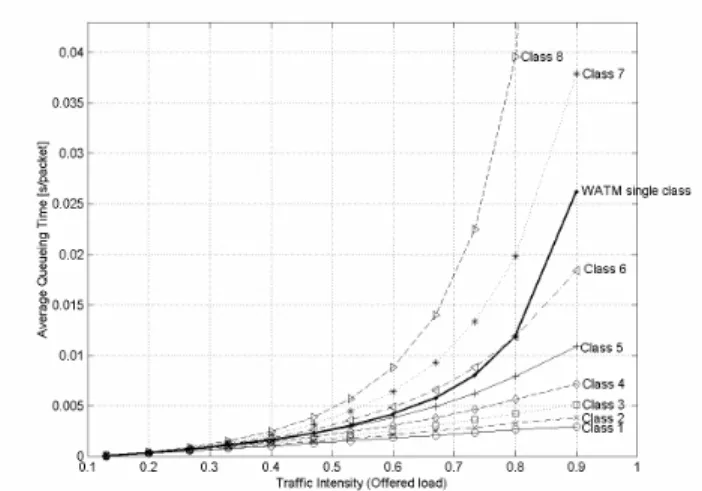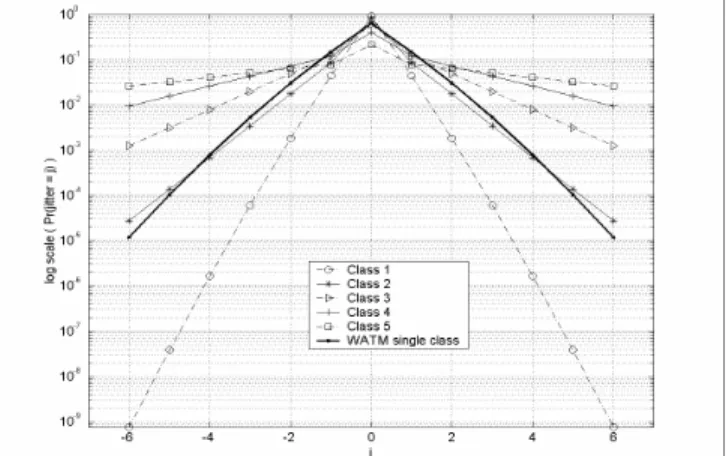Publisher’s version / Version de l'éditeur:
Vous avez des questions? Nous pouvons vous aider. Pour communiquer directement avec un auteur, consultez la première page de la revue dans laquelle son article a été publié afin de trouver ses coordonnées. Si vous n’arrivez pas à les repérer, communiquez avec nous à PublicationsArchive-ArchivesPublications@nrc-cnrc.gc.ca.
Questions? Contact the NRC Publications Archive team at
PublicationsArchive-ArchivesPublications@nrc-cnrc.gc.ca. If you wish to email the authors directly, please see the first page of the publication for their contact information.
https://publications-cnrc.canada.ca/fra/droits
L’accès à ce site Web et l’utilisation de son contenu sont assujettis aux conditions présentées dans le site LISEZ CES CONDITIONS ATTENTIVEMENT AVANT D’UTILISER CE SITE WEB.
Proceedings of the Fifteenth Annual International Conference on Wireless
Communications (Wireless 2003), 1, 2003
READ THESE TERMS AND CONDITIONS CAREFULLY BEFORE USING THIS WEBSITE.
https://nrc-publications.canada.ca/eng/copyright
NRC Publications Archive Record / Notice des Archives des publications du CNRC :
https://nrc-publications.canada.ca/eng/view/object/?id=4aa8c028-08d4-47d9-8920-e4f5ff12a39f https://publications-cnrc.canada.ca/fra/voir/objet/?id=4aa8c028-08d4-47d9-8920-e4f5ff12a39f
NRC Publications Archive
Archives des publications du CNRC
This publication could be one of several versions: author’s original, accepted manuscript or the publisher’s version. / La version de cette publication peut être l’une des suivantes : la version prépublication de l’auteur, la version acceptée du manuscrit ou la version de l’éditeur.
Access and use of this website and the material on it are subject to the Terms and Conditions set forth at
Performance Analysis of Wireless Multiprotocol Label Switching
(WMPLS) Networks
National Research Council Canada Institute for Information Technology Conseil national de recherches Canada Institut de technologie de l'information
Performance Analysis of Wireless Multiprotocol Label
Switching (WMPLS) Networks *
Srinivasan, K., Chung, J.-M. , Soo, H.-M.
July 2003
* published in Proceedings of the Fifteenth Annual International Conference on Wireless Communications (Wireless 2003). July 7-9, 2003. Volume 1. pp. 240-253. Calgary, Alberta, Canada. NRC 46558.
Copyright 2003 by
National Research Council of Canada
Permission is granted to quote short excerpts and to reproduce figures and tables from this report, provided that the source of such material is fully acknowledged.
Paper Title
: Performance Analysis of Wireless Multiprotocol
Label Switching (WMPLS) Networks
Authors
: Kannan Srinivasan, Jong-Moon Chung and Hooi-
Miin Soo
Submitted To : Proceedings of the Fifteenth Annual International
Conference on Wireless Communications (Wireless
2003)
Volume
:
1
Pages :
240-253
Performance Analysis of Wireless Multiprotocol Label Switching
(WMPLS) Networks
Kannan Srinivasan
1, Jong-Moon Chung
2and
Hooi-Miin Soo3Institute for Information Technology – Wireless Systems National Research Council
1250 Grand Lake Road, PO Box 5300, Sydney, NS B1P 6L2, Canada. E-mail: 1Kannan.Srinivasan@nrc-cnrc.gc.ca
ACSEL & OCLNB Laboratories Oklahoma State University
202 Engineering South Stillwater, OK 74078, USA.
E-mail: 2jchung@okstate.edu, 3shooi@okstate.edu
ABSTRACT
In this paper, a brief introduction to a novel wireless protocol called wireless multiprotocol label switching (WMPLS) and its detailed performance analysis are discussed. WMPLS enables differentiated services (DS or DiffServ) in the wireless and mobile networks. WMPLS also supports various traffic engineering (TE) parameter negotiations using different signaling protocols. A detailed performance analysis comparing WMPLS and wireless asynchronous transfer mode (WATM) has also been presented.
1. INTRODUCTION
Wireless multiprotocol label switching (WMPLS) is a novel wireless protocol designed to efficiently support integrated and differentiated services with flexible quality of services (QoS) over wireless and mobile networks. WMPLS makes use of various signaling protocols such as resource reservation protocol with traffic engineering extensions (RSVP-TE) and label distribution protocol (LDP) to support negotiation of TE parameters and QoS. WMPLS is a homogeneous protocol to the future wide area network (WAN) protocols like multiprotocol label switching (MPLS), generalized MPLS (GMPLS) and multiprotocol lambda switching (WMPLambdaS). This homogeneity will enable same TE parameter negotiations supported in WAN to be carried over to the wireless networks with minimal translation at the border of WAN and wireless networks. WMPLS is also designed to support efficient and dynamic wireless and mobile ad hoc multicasting.
The existing wireless protocol called WATM [1] although has various advantageous features like efficient frequency spectrum usage, integrated service support and minimal packet delay, it also suffers from some major disadvantages. The major disadvantages of WATM include (i) inability to support DS traffic, (ii) inefficient dynamic multicasting control of real-time data delivery services, (iii) complexity in supporting
ad-hoc networking and mobile ad-hoc networking, (iv) fixed cell size to various channel conditions and (v) complexity involved in interoperability and overlay models.
This paper is organized as follows: Section 2 discusses the WMPLS networking briefly. The performance analysis of WMPLS is explained in detail in section 3. Section 4 has the conclusion and the references are provided in section 5.
2. WMPLS NETWORKING
WMPLS performs classification, queuing and scheduling (CQS) to provide DS. This CQS operation is carried out at every WMPLS label switching router (LSR).
WMPLS applies two fundamental protocol header formats, which are shown in Fig. 2. Within the WMPLS network, the first 2 bits of the 20 bit Label field will be read as a Flag field. This field will determine if a Control field and cyclic redundancy check (CRC) field are applied or not, and it will also indicate the length of the applied Control field either being 1 or 2 bytes, corresponding to the number of sequence bits used, either 3 or 7 bits, respectively. In an overlay model, where the lower layer protocol provides error and flow control, the WMPLS header format with no Control field and CRC field. To identify this label format, the first two bits of the label will be set to zero, which will imply that no control field and no CRC field is being used (Fig. 2 (a)).
Fig. 1. Functional diagram of the LSR CQS operation [1,2]. Input Ports Scheduling Multiplexer Output Queue 1 Output Queue 2 Output Queue 3 Output Queue N : : Output Scheduling Classification & Queuing Outp ut Po rts Input Port Input Label Output Label : Forward (Label Switching) Table
In the Control field, shown in Fig. 2 (b), N(S) is the sending sequence packet/frame number and N(R) is the automatic retransmission request (ARQ) or flow control acknowledging frame sequence number. Using more sequence numbering bits will allow larger flow control windows to be established in support of high-speed sequential frame transmission. This option will enable end-to-end or hop-by-hop error and flow control to be provided when necessary on a labeled packet basis. The Control field of the WATM header will include error and flow control functionalities. In applications of mobile ad hoc networking, it is necessary to have the option of hop-by-hop error and flow control. As discussed in Section 2.1, WATM is not capable of hop-by-hop error and flow control, where this functionality is left for the end-to-end users to conduct, or if an overlay model is used, hop-by-hop error and flow control may become possible if the underlying lower layer protocol can provide this service.
Fig. 2. MPLS protocol structure. The payload field (not drawn) will follow the TTL/CRC field (variable length).
(a) WMPLS Header with no control field or CRC field.
(b) WMPLS Header with control field and CRC field.
Flag (2 bits) CoS (3 bits) Control field (8 or 16 bits) CRC (8 bits) Label (18 bits) S (1 bit) TTL (8 bits) ARQ (2 bits) N(R) (3 or 7 bits) N(S) (3 or 7 bits) Label (18 bits) CoS (3 bits) S (1 bit) TTL (8 bits) Flag (2 bits)
TABLE 1. WMPLS header Flag bits.
Flag Control Field Sequence Numbers N(R) &N(S) and 2 bit FEC & ARQ control field.
0 0 No Control and CRC Field.
0 1 3 bit N(R) and 3 bit N(S).
1 0 7 bit N(R) and 7 bit N(S).
1 1 Reserved for future applications.
TABLE 2. WMPLS header flow control and error control acknowledgement control bits. ARQ flow
control Bits
Flow Control and Error Control Acknowledgement of Frames.
Control Symbol
00 Accumulative acknowledgment of N(R-1). RR
01 Receiver Not Ready flow control and accumulative acknowledgment of N(R-1).
RNR
10 Go-Back-N ARQ REJECT N(R) signal & accumulative acknowledgment of N(R-1).
REJ
11 Selective Reject/Repeat N(R) signal. SREJ
The label distribution protocol (LDP) and the resource reservation protocol with traffic engineering extensions (RSVP-TE) are the two signaling protocols for MPLS networks. These protocols have to be modified accordingly to support WMPLS operations [4].
3. PERFORMANCE ANALYSIS OF WMPLS
In this section, the performance analysis of WMPLS and WATM are compared. In section 4.1, the performance analysis is carried out for transmission control protocol (TCP) over WMPLS and WATM. In section 4.2, the performance analysis of WMPLS and WATM with selective reject (SREJ) ARQ scheme is analyzed.
3.1. WMPLS PERFORMANCE ANALYSIS BASED ON TCP
For the performance analysis of WMPLS and WATM with TCP, WMPLS with 4 byte header (with no CRC and no ARQ) has been assumed. Also, packet size adaptation based on channel condition has been assumed for WMPLS. For WATM, AAL5 type has been assumed.
TCP triggers congestion control for any packet loss [3]. In wireless and mobile networks, this packet loss could be due to link loss and not due to network congestion. This congestion control initiated by TCP may adversely affect the overall throughput of the network. In order to overcome this problem, the packet size can be chosen such that it maximizes the throughput [8]. The packet adaptive technique proposed in [8] has been assumed for WMPLS.
From [3], the throughput efficiency of a protocol is as:
(
)
C W C C OverHead P N P P R ⋅ ⋅ − + − = 1 1η
,
(1)
wherel
h
h
R
OverHead=
+
with has header size (in bits), las payload size (in bits), PC= Probability {TCPpacket is received without any errors}, and
N
W = Window Size. Now, assuming that the probability oferror in any bit is independent of the probability of bit error in any other bit, we can write the probability of correct lower layer (WMPLS or WATM) packet
( )
Ppkt as the probability of no error in header andprobability of no error in the payload. Hence,
) ( ) 1 ( h l pkt p P = − +
,
(2)
where l is the lower layer packet payload size in bits.
A single TCP packet may contain one or more lower layer packets. Hence,
P
C can be defined asm pkt
C P
P =(1− )
,
(3)
where m is the number of lower layer packets in a single TCP packet.
This analysis can be applied to WATM by substituting 56 (7 bytes) for h and 384 (48 bytes) for l in equations (1), (2) and (3). For WMPLS, we can substitute 32 (4 bytes) for h. Now, the optimized packet size for WMPLS can be calculated by maximizing equation (1) for various channel conditions (p).
a. Optimized WMPLS Payload Size for Wn = 100
b. Optimized WMPLS Payload Size for Wn = 1000 Fig. 3. Optimized WMPLS Payload Size
Fig. 3gives the optimized WMPLS packet size for different channel conditions and for different TCP payload sizes. Although there is no significant change in the optimized packet size for different channel conditions at larger TCP payload sizes, it does not necessarily mean that throughput efficiency is the same for those conditions. This is evident from Fig. 4. Fig. 4 depicts the throughput efficiency for optimized WMPLS for varying channel conditions and for varying TCP payloads. The throughput efficiency is nearly constant at best channel condition (BER = 10-8) for varying TCP payload sizes. As channel condition gets worse, the throughput efficiency is better for lower TCP payload sizes. From the plot, it is also clear that WMPLS has better performance compared to WATM for most cases. At the worst channel conditions, WMPLS and WATM perform nearly the same.
b. Throughput Efficiency Comparison for Wn = 1000 Fig. 4. Throughput Efficiency Comparison of WMPLS and WATM
3.2. WMPLS PERFORMANCE ANALYSIS BASED ON SREJ TECHNIQUE
In this section, performance analysis of WMPLS and WATM are compared for selective reject (SREJ) ARQ case. Selective reject will lead to better performance than TCP (GoBackN) as only the packets that were in error are to be retransmitted. We make use of a direct equation from [8]. The adaptive packet size technique described in [8] assumes that all the bit errors are independent. We use this optimized packet size technique for WMPLS to optimize the network throughput for SREJ case. For WATM also a SREJ ARQ technique has been assumed. The optimized packet size based on different channel conditions is given by [8]:
(
)
(
)
(
)
(
p)
p h p h p h lopt − − ⋅ + − ⋅ − − − ⋅ − = 1 ln 2 1 ln 1 ln 4 1 ln 2 2,
(4)
where,
l
opt is the optimal packet size, his the packet header size (in bits), and p is the probability of bitFig. 5. Optimized WMPLS Payload Size for SREJ
The throughput efficiency of a protocol using SREJ is given by [8]:
(
)
(l h)p
h
l
l
EFF
− +−
⎟
⎠
⎞
⎜
⎝
⎛
+
=
1
1
.
(5)
As can be seen from Fig. 6, WMPLS with adaptive packet size maximizes the throughput efficiency for various channel conditions. It is also evident that WMPLS performs better for all the channel conditions than WATM. This is because WATM suffers from fixed cell sizes and so is limited to fixed throughput efficiencies for different channel conditions.
3.3.WMPLS PERFORMANCE ANALYSIS BASED ON AVERAGE QUEUEING DELAY
In this chapter, an analysis of the average queueing delay of WATM and WMPLS is conducted through the MX/D/1 queueing model. The mathematical derivations for WMPLS with DS are presented, and compared to WATM that does not support DS.
The bursty traffic flow is estimated with a batch Poisson arrival model with rate λ (for WMPLS λ =
∑
nj=1λj) with packet size X (bits). In the MPLS shim header a 3-bit field has been reserved for thepacket’s “precedence” or “class of service” indication [10]; this enables the label to distinguish 1 of 8 priority levels, which is indicated by j. Compared to this, WATM as well as ATM were developed to provide integrated services, but not DS. In the analysis conducted it is assumed that the WMPLS queueing scheduling follows a nonpreemptive priority control mechanism. The traffic is fed into a single server queue nonblocking system (infinite buffer capacity), with output link capacity C (bits/s) and deterministic service time d = 1/µ (fixed packet size). The packet service time S is equal to X/C, and average service rate
] [ 1ES
=
µ [13]. For WMPLS, the class j traffic intensity is defined as =
∑
= =∑
j= i j ji i
j 1λ µ 1λ d
ρ , and the total
traffic intensity is defined asρ=λd. For the integrated services class of ATM, the traffic intensity is denoted simply byρ=λd.
Define S0 as the time required for completing the packet already in service. The queueing delay (Wq) in
this paper is denoted as the average time spent in queue of a new arriving packet before entering service, where the delay is due to the multiplexing data over a shared link at a node/router.
For WMPLS, the average queueing delay time of a class j packet can be represented as [7]:
( )
j Wq=
⎟⎟ ⎟ ⎠ ⎞ ⎜⎜ ⎜ ⎝ ⎛ − ⎟⎟ ⎟ ⎠ ⎞ ⎜⎜ ⎜ ⎝ ⎛ −∑
∑
= − = j i i j i i m m S E 1 1 1 0 1 1 ] [ µ λ µ λ,
(6)
and for WATM, the average queueing delay time of a packet is Wq=E[S0]
(
1−ρ)
. TheE[S0] can beobtained by using the Pollaczek-Khintchine formula approach with the constraint of 2
S
σ (variance of service time) equaling 0, and including the batch Poisson arrivals characteristic with the batchiness parameter B(ρ) [6, 11]. We derive:
[
( ) 1]
2 ] [ 0 = λd+B ρ − d S E.
(7)
Fig. 7 shows the effectiveness of DS deployed through WMPLS compared to the integrated services model of WATM. As the traffic intensity increases, all traffic streams will experience a longer queueing time, although in different ratios based on the topology applied. It can be observed that the priority classes of 1 through 5 of the WMPLS system perform better than WATM in respect of average queueing time of the system. In addition, for a high utilization of 0.8 and beyond, class 6 of the WMPLS topology also performs better than the WATM model.
Fig.7. Comparison of average queueing delay time between WATM and WMPLS, the WATM value is normalized to scale 10 for comparing with WMPLS. Let WMPLS packet size equal to 550 bytes and WATM packet size is 55 bytes. Assume the link
capacity, C = 10Mbits/s, with various traffic intensity and batchiness.
3.4.WMPLS PERFORMANCE ANALYSIS BASED ON NORMALIZED
INTER-ARRIVAL JITTER PROCESS
In this chapter, an analysis of the interarrival jitter effects of WMPLS and WATM is provided. The homogenous traffic characteristics are assumed [5, 6], where all the background traffic streams and tagged stream are considered to have the same period T. It is also assumed that the network utilization ρ = 1. In the WMPLS model analyzed, it is assumed that the priority control scheduling follows a head-of-the-line
(HOL) priority scheme, where the packet that has been postponed in services will wait at the head of the line of its equivalent class until all higher priority packets have been all cleared out of the server. The HOL priority scheme can minimize the jitter effects without imposing significant jitter/delay effect on
preempted packets.
For the WMPLS model, the random variable Jm,n = j
~ (where, n = 1, 2, …, N class and cycle m ≥ 1)
denotes the process of normalized/centered jitter between the mth and (m+1)th packet of the nth class tagged stream in which both packets are from the same source. This normalized probability of jitter for the nth class tagged stream for homogenous case, we have derived it in [5]:
P
{
Jm,n= j}
~=
∑
∑
= − − − = ⎪⎭ ⎪ ⎬ ⎫ ⎪⎩ ⎪ ⎨ ⎧ − ⎥⎦ ⎤ ⎢⎣ ⎡ − | | 0 ) 1 ( ) | (| ) ( ) ( , ) ( j a a T a j k k n k T a f j a T p B a f(8)
For a zero jitter offset, i.e., j = 0, (8) simply becomes −
∑
(=−1){
=}
1 , ~ 1 jT PJmn j . As for class 1 of WMPLS [5]:
P
{
Jm,1= j}
~=
∑
− = ⎥⎦ ⎤ ⎢⎣ ⎡ ) 1 ( | | 1, ( ) T j k k k T f j T p B(9)
We will need the following functions [5],
⎥⎦ ⎤ ⎢⎣ ⎡ − − ) 1 ( , T a T p Bk n k a T n k n T p T p k a T − − − ⎟ ⎠ ⎞ ⎜ ⎝ ⎛ − ⎟ ⎠ ⎞ ⎜ ⎝ ⎛ ⎟⎟ ⎠ ⎞ ⎜⎜ ⎝ ⎛ − − = ) 1 ( 1 1
(10)
wherek∈[1,(T−a−1)],a≤|j|, 1≤ j ≤(T−1), and [5] a n n p p a f (1 )( ) 2 1 ) ( ) 1 ( ) 1 ( − − − = a≤| j|,
(11)
f
k(
j-a)
⎪ ⎩ ⎪ ⎨ ⎧ ≤ + − − + = . , 0 , ) 1 ( 1 1 2 otherwise k j for k a j k(12)
For WATM, the analysis in [9] is applied:
P
{
Jn= j}
~=
(1,N)f (j) T B k N j k k∑
=for
j ≤N,
(13)
which rely on two discrete distribution functions, the binomial distribution [9],Bk(1T,N)= ⎟⎟ ⎠ ⎞ ⎜⎜ ⎝ ⎛ K N pk (1 –p)N – k
; and the triangular function [9], fk( j) = 2
) 1 ( 1 1 + − + k j
k for j ≤k, and is equal to zero otherwise.
Fig.8. Comparison of the probability of jitter between WATM and WMPLS. The WMPLS packet size has been set to 550 bytes/s and the WATM cell size is 55 bytes/s. The WATM jitter values have been normalized to scale 10 for comparing with
WMPLS (T(WATM)Scale = 10*TWMPLS). Let TMPLS=30 and TWATM =300.
Fig. 8 shows the effectiveness of differentiated services deployed through WMPLS compared to the integrated services model of WATM. It can be observed that the priority class of 1 of the WMPLS system performs significantly better than WATM in respect of the inter-arrival jitter probability. The performance of WATM seems quite closed to class 2 of WMPLS in the region of having probability of jitter equal to 1 and beyond. Lower priority class of 3, 4 and 5 of MPLS has worse jitter performance than WATM. This is due to the HOL (head-of-line) priority control scheme as well as the WMPLS packet size applied in the experiments.
4. CONCLUSION
In this paper, a novel wireless protocol called WMPLS was briefly introduced. With adaptive packet size feature, it was shown that WMPLS performs better than WATM with TCP. It was also shown that WMPLS has better throughput efficiency than WATM if SREJ ARQ technique is applied for link level losses. Finally, average queuing delay and jitter equations were derived and were plotted for WMPLS (with DS) and WATM. Due to the differentiated services deployed through WMPLS shim header, the priority classes of 1 through 5 of the WMPLS system perform better than WATM in respect of average
queueing time of the system, where nonpreemptive priority scheme is applied in WMPLS. As for jitter performance, since HOL (head-of-line) priority control scheme is used to control inter-arrival jitter in WMPLS, only class 1 is better than WATM, and class 2 is close to WATM. The effectiveness of DS in WMPLS has been clearly observed via the comparisons between the WMPLS and WATM queueing model.
![Fig. 1. Functional diagram of the LSR CQS operation [1,2].](https://thumb-eu.123doks.com/thumbv2/123doknet/14196701.479189/5.918.328.696.721.986/fig-functional-diagram-lsr-cqs-operation.webp)

